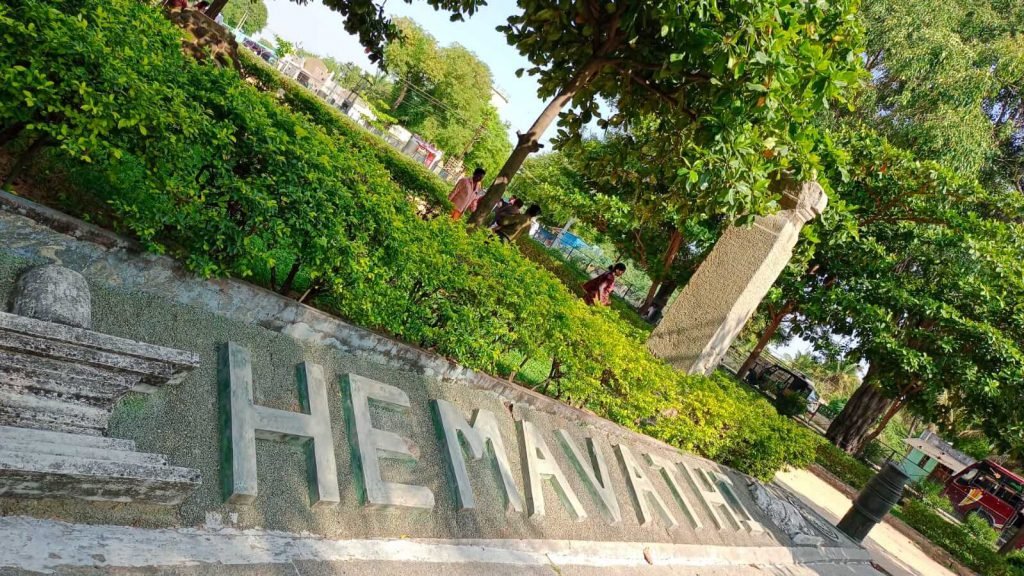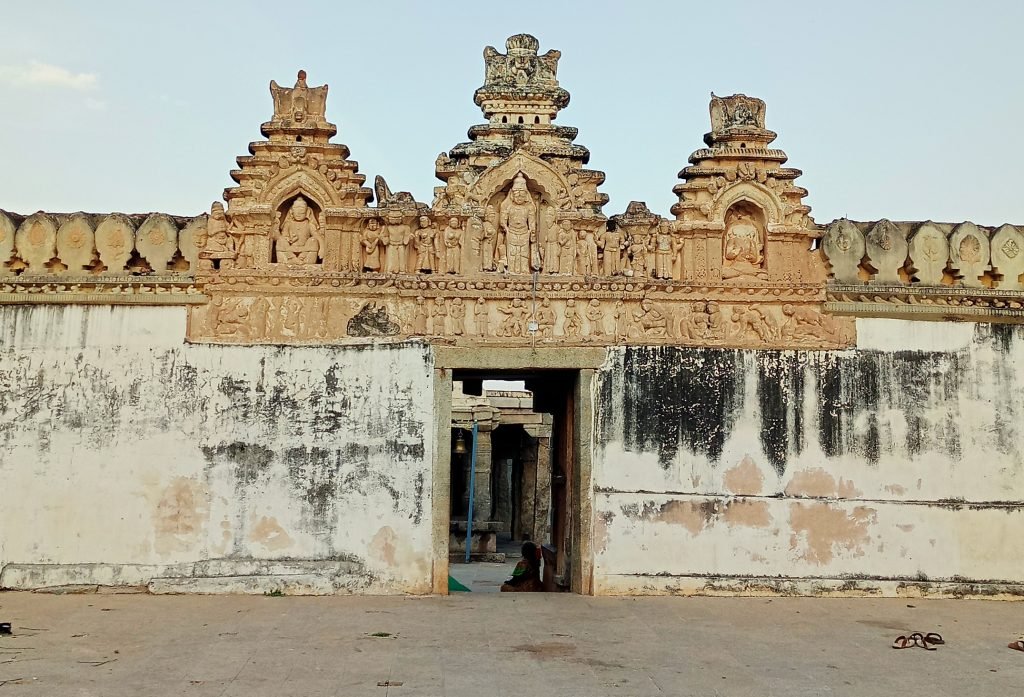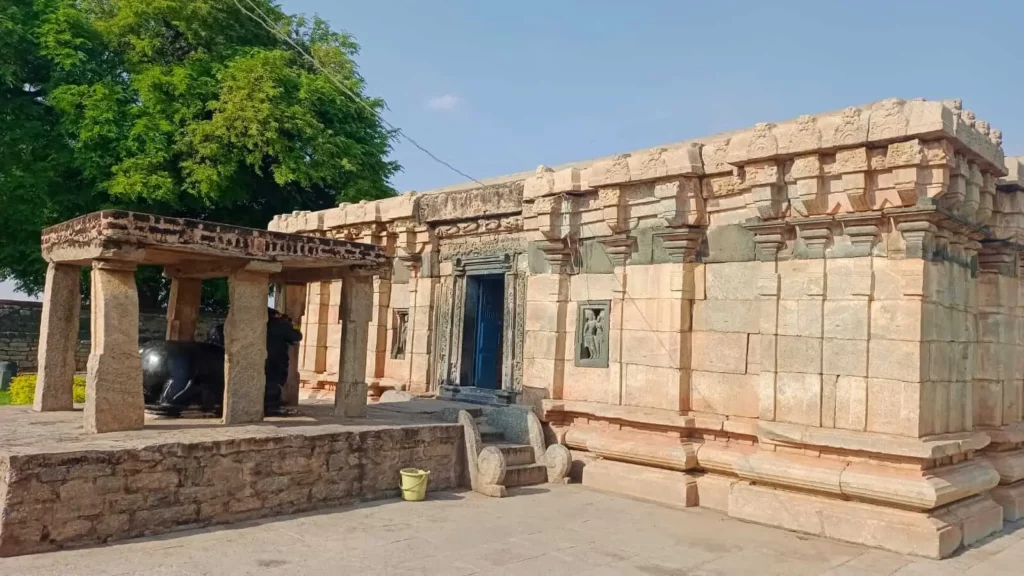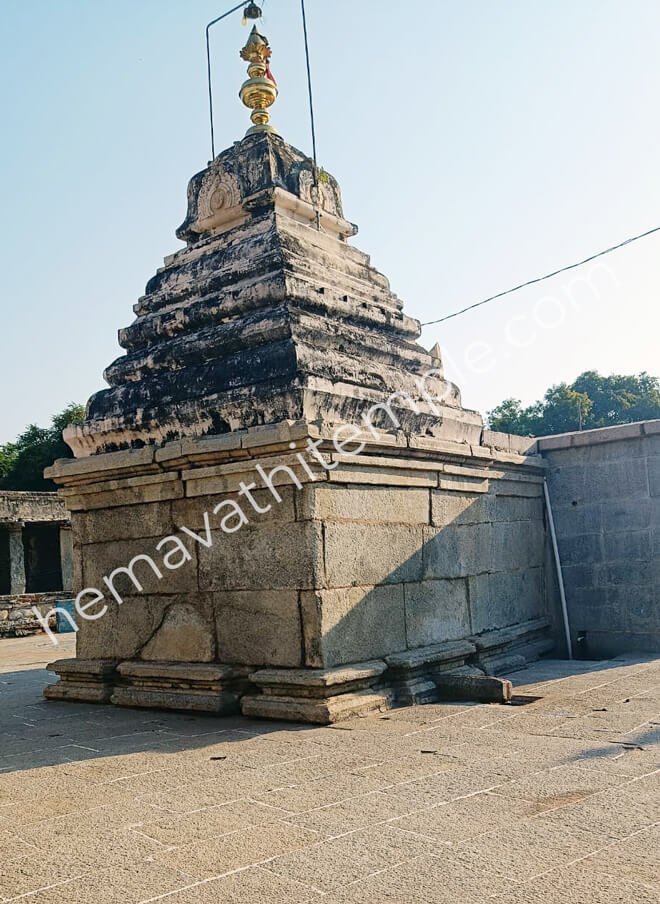
The temples built during the time of Nolambarajas are Hemavathi, during whose time the Basavanna temple in Tadakaluru Shira taluk of Karnataka stood out. And it is believed that Bhairaveswara Swami, who is revered in the Siddappa Temple at Vadikere (Hiriyur – Karnataka), where Hemavati is considered to be Siddeshvara’s younger brother, may have been moved from Hemavati and enshrined.
Another amazing rock formation in the southwest corner of the present Hemavati is the Panchalinga, a temple of sisters with two genders. These are the temples that are not being supported by the people and the government. Most of the amazing structures are harden like rubies in the soil with alluvial soil.
On 30 October 2020, an important discovery was made in Kalugudu village, Gummagatta mandal, Anantapur district, Andhra Pradesh – a two feet tall stone sculpture of Lord Surya was found by a farmer working in the field. This was reported by the Joint Secretary of Rayadurgam Heritage Association, who visited the site, captured photographs and shared them with the historian and CEO of Vijayawada and Amaravati Cultural Center (CCVA). Expert analysis has identified the sculpture as dating to the 10th century, in the Nolamba Pallava style of architecture, depicting the Sun Lord holding lotus flowers in both hands. It is noteworthy and somewhat surprising that the designations AD and BC continue to be used among Indian historians despite the unusual nature of such finds
The owner of the identified land immediately informed the village revenue officer. Gummagatta mandal tehsildar reported the matter to higher authorities and local officials also visited the spot. A nearby temple priest performed the ritual of “pooja” to the idol. Expressing concern over its preservation, Kumar asked the authorities to preserve the statue in the Anantapur government museum. This news was widely reported by several media houses, the original source of which was “The Hindu”.

While the proposed dating of the sculpture places it in the period of the Satavahanas, some researchers have suggested that its origin may extend beyond the medieval era. A stone inscription found north of the site associated with the Nolamba king Maidammarasa of the 2nd century CE, is mentioned in this connection. The inscription, in Kannada language and Telugu-Kannada script, wittily describes a man’s self-sacrifice on the death of his master, known as “Kilagunte”. However, this inscription appears to be unrelated to the sculpture of Lord Surya, which, according to scholars, is connected with the art of the Satavahanas or the Andhra Ikshvaku kings. To further authenticate and examine these discoveries, inscriptions in the “Kannada language and Telugu-Kannada script of the 2nd century CE” will be examined as recorded in the volumes Epigraphica Karnataka and Epigraphia Indica.


This feature is consistently depicted in Northern sculpture, a tradition followed by Chunkis sculptors but not in the Tamil school, which depicts the Sun as a solitary glory. The Chalankya school lacks top-boots on Surya, indicating the absence of specific northern traditions. A broken pillar with a long Canarese inscription to the right of Surya (Plate 13) is indicated as belonging to the greatest of the Nolamba rulers. To align the period of the inscriptions with the nearby sculptures, it is necessary to adjust the dates accordingly. In India, sculptures are generally dated based on style or inscriptions on or near them. This method has been standard practice among European Indologists for over 150 years, a method followed by Indian colleagues.
Referring to another Nolamba Surya sculpture exhibited in the Madras Museum, it is described as “the most elaborately worked Surya image and a masterpiece of Nolamba art”. The sculpture highlights the intricate decorative patterns common in Nolamba sculptures, with elaborate karanda type crowns and makarakundalas adorning the earlobes.


Elaborate courses of neck ornaments, adorned with mango-shaped pendants covering the entire chest, contribute to its decorative magnificence. The sculpture also displays tufts on the shoulders and ornate kiuras on the arms, further enhancing its intricate detailing. Unfortunately, with no specific cause of damage and loss, “both the arms of the figure and the lotuses held in the arms were broken.”
This small temple is associated with an important Shaivite saint who converted the Pallava king Mahendravarma to Shaivism. The temple was built by Rajendra (1014-1044 CE), and an inscription on a pillar praises Rajendra Chola for this holy place. The temple complex, surrounded by pillared corridors, has fifty intricately carved pillars made of green basalt. These columns display elaborate carvings that differ in style from other nearby structures. Interestingly, these columns are believed to be Nolamba pillars, brought as war trophies by Rajendra, who is highly regarded by historians as a great artist.


When comparing these three Surya sculptures, it is clear that despite their common nolamb origins, they exhibit significant variations in style, character and form. The question arises whether the Nolambs of the same dynasty employed different sculptors or issued specific orders that led to these differences. This calls for a critical analysis. These differences in various iconographical elements clearly indicate that the three sculptures cannot be attributed to the same period.
A Surya idol was found in a buried state in an agricultural field in Kalugudu village, Gummagatta mandal, Anantapur district, Andhra Pradesh, which strongly suggests that it was buried and abandoned rather than being actively worshiped in a temple due to its deformities. Many such idols have been desecrated by outside forces, often left “as is” in fields and remote areas.
Historical invasions and conflicts such as the raids led by Malikafur in the late 13th and early 14th centuries can be attributed to the discovery of sculptures in a broken state. Malikafur invaded southern India between 1309 and 1311, targeting several regions, including the Hemavati region. In 1309, he launched an invasion of the Kakatiya kingdom and successfully breached the capital of Warangal in 1310 after a long siege. After the surrender of the Kakatiya ruler Prataparudra, Malikafur returned to Delhi in June 1310, amassing considerable wealth from this victory.
Subsequently, in October 1310, Malikafur conducted another raid that extended to the southern tip of the Indian peninsula. His forces besieged and plundered Dvarasumru on 25 February 1311. Continuing his conquest, he targeted the Pandya kingdom, amassing vast wealth along with elephants and horses from various regions. Finally, after capturing Madurai and amassing considerable booty in his campaigns, Malikafur reached Delhi in triumph on 18 October 1311. These invasions led to extensive looting and desecration of many sites, resulting in the abandonment and mutilation of various artefacts, including sculptures.
Subsequently, in October 1310, Malikafur conducted another raid that extended to the southern tip of the Indian peninsula. His forces besieged and plundered Dvarasumru on 25 February 1311. Continuing his conquest, he targeted the Pandya kingdom, amassing vast wealth along with elephants and horses from various regions. Finally, Malikafur reached Delhi in triumph on 18 October 1311, after capturing Madurai and amassing considerable booty in his campaigns. These invasions led to extensive looting and desecration of many sites, resulting in the abandonment and mutilation of various artefacts, including sculptures.

In Hemavati
Famous Shiva Temples
Siddeshwara Swamy Temple
During Chaitram and Vaisakh months, it is wonderful to see the sunlight touching the 5.8 feet tall Siddeshwara Swamy during the dusk.
Doddeswara Swamy Temple
Sri Doddeswara Swamy Temple has Saiva Purana stories as well as Vishnava Purana stories engraved in them. Opposite the largest Nandi temple.
Chela Bhairava Swamy Temple
It is believed that if jaggery is offered in the temple of Sri Chelabhairavaswamy, the Swami will protect their house from snakes, scorpions and any other poisonous insects.
Malleswara Swamy Temple
In the Malleswara Swamy temple, the lingam shines brightly with the rays of the morning sun. It is on the left side of Doddeswara temple.
Virupaksheswara Temple
The temple is famous for its sculpture. This temple is on the right side of Doddeswara Swamy temple. In the mandapa opposite to Shivalinga, Nandi's hand makes a sound.
Navakotamma Temple
People here worship Navakotamma as the younger sister of Lord Siddeshwara. People here perform puja to Navakotamma to get children.


